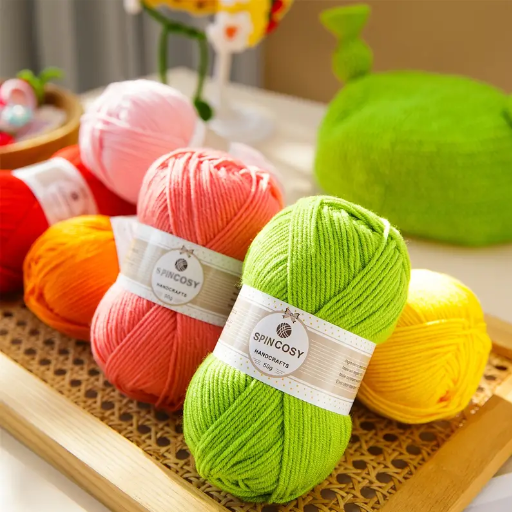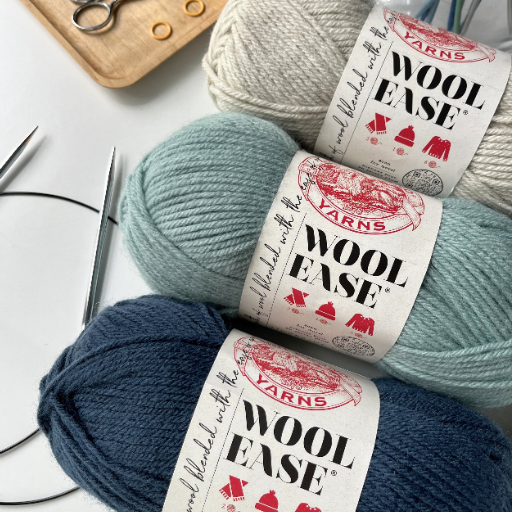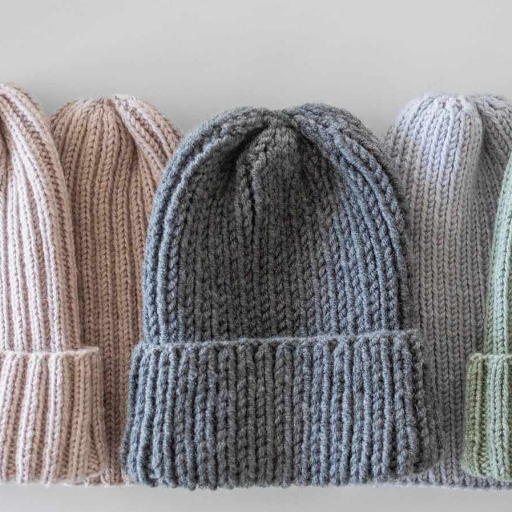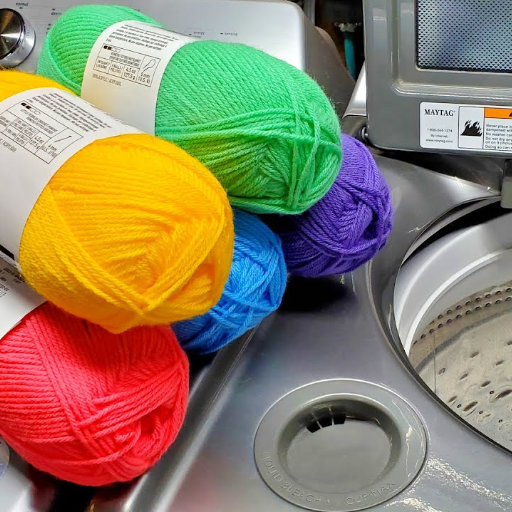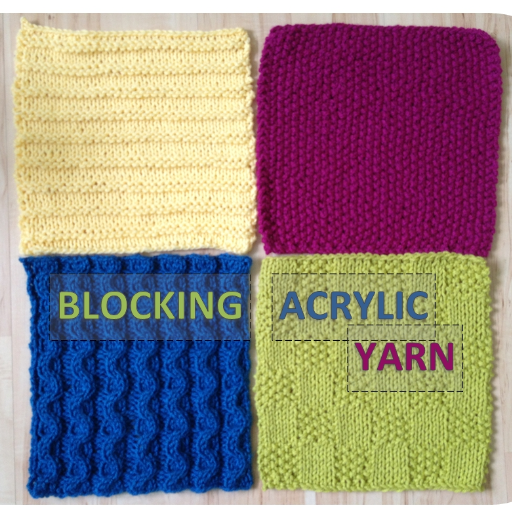For a new user, threading the sewing machine for the first time can be a challenge, but this guide is designed to help you gather the necessary skills and confidence to tackle it head on, almost like magic! Understanding every step is fundamental. This article will cover everything from how the sewing machine works to successfully threading the needle. By the end of this guide, you will be able to start new hobbies, mend clothes, or even explore the world of creative sewing projects like a pro!
The guide will provide clear and precise instructions so that you can seamlessly complete every step without any difficulty. All in all, if you follow this guide along with some practice, you are sure to start off with your sewing machine with the utmost precision and ease.
What do I need to know before threading a sewing machine?

Prior to setting the thread of the sewing machine, first ensure that you understand the manual of the machine and the key components, which include the spool pin, tension disk, take-up lever, bobbin, and needle. Ensure that the machine is switched off for safety purposes, and also check if the correct type of thread and needle is selected for the fabric. Lastly, inspect the bobbin to check if it is wound properly and also does the bobbin fit in the case securely. Proper preparation with regard to these elements will assist in threading the machine and help prevent any unforeseen problems with sewing the fabric later.
Understanding the parts of a sewing machine
understanding the different components of a sewing machine is of utmost importance while sewing. Every part such as the spool pin, tension disk, and the take-up lever is necessary and contributes towards seamless functionality. For example, the thread is kept tight due to the disk shaped like a circle, whereas the lever, which takes up the slac,k avoids threads from getting tangled and ensures proper flow. I always advise that proper understanding of both the components and their functions be mastered before attempts of starting, as this saves time and problems in effectiveness.
Choosing the right thread for your project
Deciding on the ideal thread for your fabric depends on its nature, intended use, and how long you expect it to last. Polyester thread is great for general sewing purposes simply because of its strength and stretch. For fabrics like silk, use fine cotton or silk threads for a delicate touch. When sewing with thicker materials such as denim or upholstery, a heavy duty thicker string is recommended to withstand stress. Make sure to choose the string type in correspondence with the material for the best results.
Importance of consulting your sewing machine manual
I highly recommend looking up the instruction manual for your sewing machine, because trust me, it can save you a lot regarding the long hours that can be ruined out of sheer anger over unmet expectations. Each machine comes with its own set of features, settings, and maintenance practices that greatly impact your sewing endeavors. Based on your machine, the manual walks you through tension adjustments, threading, and picking out stitches. Having worked with a multitude of sewing machines over the years, I have picked up on just how crucial it is to refer back to the sewing machine manual. Always bear it in mind—there is no better friend to your sewing practice than that manual!
How do I thread the upper part of a sewing machine?

To set up a sewing machine, begin with the needle located at the zenith of its ascension and the presser foot in a vertical position. This can be achieved by raising the presser foot. Mount the spool of thread onto the spool pin and draw the thread over to the thread guide. Continue along the threading route specified on the machine, which usually contains routing the thread through the tension discs, pulling it downwards around the take-up lever, and finally inserting the thread into the needle from the anterior to posterior side. Remember to always check your manual for specific instructions for your model.
Placing the spool of thread on the spool pin
one of the most essential parts of preparing a sewing machine is putting the spool of thread onto the spool pin. As a starting point, confirm that the position of the spool pin is correct. In my experience, a vertical position is easier for most machines, but a horizontal position can be used as well. If your machine has a horizontal pin, make sure to use a spool cap; this will help keep the thread in place while sewing. Following the threading path correctly, in conjunction with checking for any resistance, will ensure you have perfectly smooth stitches. Remember that proper spool placement can save you time with troubleshooting an error after sewing.
Guiding the thread through the thread guides
Correctly threading your sewing machine is essential to its proper functioning, and as always, I have some pro tips to make it easier. To begin, make sure to identify the guides on your machine; these are tiny hooks or loops that are made of either plastic or metal and help to preserve thread concentration and placement. Here’s the approach I suggest:
- Start at the Top – Once you load the spool, draw the thread and set it onto the first guide, which is placed at the top of the machine. This allows for a better release of the thread from the spool.
- Follow the Diagram -Some sewing machines have the manual, which is usually printed on the body of the machine. The manual describes the process of threading the machine. Follow the manual and ensure that no steps are missed.
- Check Each Guide – Put the thread through the guides in sequential order, ensuring that each guide is threaded correctly. These guides control movement of the thread spool and the tension of the thread during sewing.
- The Take-Up Lever is Key -Up Lever – Besides the upper looper thread guide, there is also a take-up lever and its guide. The guide can usually be found at the top of the machine face plate. Move the lever up and place the thread in the slot.
- Be Gentle Yet Firm – While placing the thread in the guides, do not yank on the thread too hard because it may snap or stretch. Snag free placement of the thread should be achieved, but you should try not to switch on the sewing machine and keep it in the off position to prevent accidents.
As a reminder, every single guide is meant to maintain a specific level of thread tension and ensure the machine stitches straight and even. Omitting any of these steps might cause tangling, skipped stitches, or loose threads to arise. Make sure you take your time during this step—it’s worth it to avoid these issues later.
Threading the tension disc and take-up lever
Just as setting up a sewing machine involves many steps, threading the tension disc and the take-up lever is crucial. First things first, I make sure the presser foot is raised. This loosens the tension discs, making it easy for the thread to be guided through the discs. Then, I carefully put the thread between the discs while making sure it does not sit too snug or too loose. Then, I pull the thread upward and place it in the take-up lever which should be at the highest position. This is important so that the required consistent even stitch thread tension can be maintained. Based on my experience, this process saves a lot of time, which is normally wasted in fixing the issue of undesired stitches and tension problems.
What’s the process for threading the needle?

In sewing, putting thread into the needle is a very basic task, however, it has a vital role to play. First things first, make sure that the Needle is properly fitted and holds its position. Angle cut the thread to ensure that the tip is neat and can easily slide into the eye of the needle. Pull the thread such that only a couple of inches is remaining. For machines, follow defined paths for threading and ensure that they are firmly set in the tension disks as well as the take up lever before the needle. Do not forget to check for proper threading because failure to do so can interrupt sewing.
Using a needle threader vs. threading by hand
finer sewing tools like a needle threader can be very effective at saving time and effort, particularly when using finer needles or tougher threads. For those with limited dexterity or poor eyesight, it’s a life saver as it completely removes the hassle of threading the needle thoughtfully. With that said, threading by hand does provide much better control and precision for complex projects, especially when one is working with bulkier threads that won’t go through the needle’s eye. For myself, I tend to use the needle threader considering speed, but in any sewing situation it is helpful to be skillful with both techniques.
Tips for threading the eye of the needle
- Use proper lighting: Make sure your working space is well-lit because natural light or a bright lamp works well. You need to see the needle’s eye clearly.
- Trim the thread end: Cut your sharp angled threads to ensure that the tip will be easier to guide through the needle’s eye.
- Steady your hands: Place your hands on a stable surface to minimize movements that improve your accuracy.
- Moisten the thread: The edges on your thread can be rough, so a quick dab of water or saliva will smoothen it, allowing easier passage.
- Utilize a needle threader: For challenging needles, a sharp eye needle threader can save you some precious time.
Incorporating these strategies into your practice will make needle threading as easy as a snap in your sewing routine.
Pulling several inches of thread through the needle
As I have learned over time, keeping several inches of thread beyond the needle’s eye is critical to enable smoother sewing. As a best practice, I would suggest always ensuring that you have at least 4-6 inches worth of thread before starting to sew. With the extra length, you have more control while stitching, and the thread will not slip out as easily with the rest of your project. If you keep this simple tip in mind, you will save time in addition to a lot of frustration in constant re-threading of the needle.
How do I wind and thread the bobbin?

To wind and thread the bobbin, first, place the spool of thread on the spool pin and run the thread through the thread guide. Make sure to place the thread around the bobbin winding tension disc to ensure proper winding. Depending on your machine, either pass the thread through the bobbin hole or wrap it around a few times to secure it to the bobbin. After that, position the bobbin onto the bobbin winder spindle, move it to the winding position, then press the foot pedal or start the machine to wind the bobbin. When the bobbin is full, trim the thread, insert the bobbin into the bobbin case (as per your machine’s specific configuration), and pull the thread to ensure it runs smoothly. Be sure to refer to your user manual for optimal usage specific to your machine model.
Winding the bobbin with thread
correctly winding a bobbin is perhaps one of the key skills to master for easy sewing. For instance, I always verify that the tension disc is in the right position to avoid threading problems, and that the bobbin is locked on the winding spindle before I begin the process. One mistake I have come across a lot is not trimming the excess thread after winding, which can cause some issues later on. My recommendation would be to be patient and follow the instructions in your machine’s manual. Each make and model has small details that can be critical to accomplishing a perfect stitch.
Inserting the bobbin into the bobbin case
In regard to placing the bobbin inside the bobbin case, I have noticed that accuracy and detail are crucial. This is how I go about this step to make sure everything is ready for smooth sewing:
- Choose the correct bobbin for your machine – First things first, make sure that you are using a bobbin that matches your sewing machine model. Imprecise dimensions will lead to jams and crooked stitches.
- Insert the bobbin correctly – While inserting the bobbin inside the case, hold it in a way that the thread unwraps and comes off it in the desired direction. That is usually counterclockwise but varies from model to model so always check the manual. Once the case is properly inserted, ensure that the bobbin sits firmly inside it without any extra movement.
- Follow the threading guide -Slowly draw the thread through the bobbin case and place it below the tension spring. This is important to ensure that the tension is accurate while sewing.
- Double-check the tension – Hold onto the thread and pull it slowly to confirm that it moves, but feels slightly tense. If the thread pulls too freely or feels stuck, the tension is not accurate.
- Insert the bobbin case into the machine -If your sewing machine has a removable bobbin case, align it to the compact groove and listen for a soft ‘click’ that indicates it is secure. For drop-in bobbins, the bobbin must remain flat in the compartment, and the thread should be guided properly through the cover’s pathway.
Utilizing these strategies will help you steer clear of one of the most prevalent issues one encounters when sewing, which is thread jams or even stitching due to a misplaced bobbin. Just remember to pace yourself and refer back to your machine’s manual whenever in doubt!
Bringing up the bobbin thread
While starting the sewing machine, you should bring up the bobbin thread first. For this, start by pulling the needle thread softly with your left hand. Now turn the handwheel toward yourself slowly to lower the needle into the machine as you progressively bring it upwards. The needle will start rising, catching the bobbin thread. Now pull the needle thread upwards to bring out the bobbin thread from the needle plate. After both threads are above the plate, gently pull them apart to loosen the threads and position the threads towards the back of the machine. This is needed so the machine can sew uninterrupted.
What are common threading issues and how to solve them?

one of the most frequent threading problems is improper machine threading, which can lead to skipped stitches or even thread breaks. Always double-check the threading path to resolve this issue. Properly placing the thread in the tension discs is also crucial. Another mistake that I observe often is using a different type of thread than required for the fabric. It is very important to use the correct thread type that matches the material in order to avoid issues with stitching. Another inevitable headache for many is tangling that occurs underneath the fabric, most often due to incorrectly oriented bobbins. Ensure that the bobbin was wound tightly, evenly, and is properly placed in its case to address this issue. Finally, another common mistake is having too much or too little tension which almost always wrecks stitches. Adjusting the tension presets and using a scrap piece of fabric for testing usually solves the problem. Be sure to stay calm; troubleshooting threading issues is simple when you are level-headed!
Dealing with thread bunching or tangling
The sewing machine’s upper thread tension needs proper attention during winding in order to minimize the chances of bunching. Incorrect upper thread tension on the sewing machines might stem from the user not paying attention to the settings on the tension disk or from the user not setting the correct lower thread tension before setting the upper thread tension. To avoid this, confirm that the machine is threaded properly and the tension settings are correct, and recheck them depending on the fabric and thread. In addition to that, the bobbin should be wound evenly and placed properly. Also, cleaning the area around the bobbin regularly does help in reducing lint that sometimes leads to tangling.
Adjusting thread tension for optimal stitching
In all my years of sewing, if there’s one general point I can offer on adjusting the thread tension on your machine for the best stitching quality, it would be this: thread tension should be adjusted to the minimum required. What is paramount is that the upper and lower threads should form a knot in the middle of the fabric you are stitching. Personally, I think it is practical to test the tension dial on a scrap piece before working on the main project. If the stitches on your fabric are too tight, you will find the upper thread pulling the bobbin thread up, and if the tension is too loose, you will end up with loops on the underside of the fabric. Incremental changes are all that is needed, therefore the next time you are stitching something, remember to be patient when adjusting the tension. It will always lead to a better outcome.
How can I practice and improve my threading skills?

Sharpening your threading skills requires you to practice them repeatedly with your machine. Start muscle memory development by practicing threading the machine multiple times in one sitting. Use different types of threads and fabrics so you start to learn how the machine works in relation to variations. Also, use the manual of your machine or instructional videos, paying very close attention to details and steps shown in them. In the long run, these habits will aid in becoming much more confident and efficient in machining threading. There are no doubt that attention to detail and patience are important.
Simple exercises for beginners
Begin by getting to know your machine. Try threading it multiple times. Get some scrap fabric and practice sewing straight lines with various tensions and threads; this will help you observe the differences. Improve your control by creating simple diagonal lines or zigzag patterns. Change stitch length and width and see how each result varies. These exercises will build comfort with your machine’s capabilities as well as foundational skills.
Troubleshooting tips for smooth threading
the most frequent problems encountered while threading arise from little things that are often taken for granted. First, ensure that the spool and bobbin are set in place correctly because incomplete placement results in annoying tension problems or stitches getting skipped. Make sure that the thread is following the correct sequence felt through all the guides and tension discs; missing a single step can derail the entire process. If the thread keeps breaking, then check the quality of the thread and make sure that the machine is clean from lint or residues, especially around the bobbin case. Also, don’t forget to rethread the machine with the presser foot up – this makes sure the tension settings are turned on properly. In the end, always remember that practice and patience help a lot. If nothing goes right, refer to your manual – it is such a helpful resource that people often forget about.
Reference
- How to Thread a Sewing Machine (with Pictures) – WikiHow
- A Step By Step Guide for How to Thread a Sewing Machine – Easy Sewing for Beginners
- Dritz 253 Sewing Machine Needle Threader – Reddit Discussion
Frequently Asked Questions (FAQs)
Q: How do I thread a sewing machine for beginners?
A: To thread a sewing machine for beginners, start by placing your spool of thread on the spool pin. Then, guide the thread through the thread guides on the top of your machine, around the tension disc, and down to the take-up lever. Next, thread the needle from front to back, and pull the thread through. Finally, thread the bobbin and place it in the bobbin case. This process may vary slightly depending on your make of machine, so always consult your machine’s manual.
Q: How do I thread a sewing machine needle?
A: To thread a sewing machine needle, first raise the needle to its highest position. Hold the end of the thread with your left hand, and use your right hand to guide the thread through the needle eye from front to back. Some machines have a built-in needle threader, which can make this process easier. Once the thread is through the needle, pull it towards the back of the machine, leaving a tail of about 4-6 inches.
Q: What’s the correct way to thread the upper thread on a sewing machine?
A: To thread the upper thread, start by placing your spool of thread on the spool pin. Guide the thread through the first thread guide on the top of your machine, then down and around the tension disc. Bring the thread back up to the take-up lever, ensuring it’s properly seated in the lever. Then, guide the thread down through any additional thread guides on the front of the machine. Finally, thread the needle from front to back.
Q: How do I thread a bobbin for my sewing machine?
A: To thread a bobbin, first place an empty bobbin on the bobbin winder. Guide the thread from the spool through the thread guide on the top of the machine, then wind the thread around the tension disc. Wrap the thread around the bobbin a few times, then place the bobbin on the bobbin winder. Push the bobbin winder to the right and start the machine to wind the bobbin. Once full, cut the thread, remove the bobbin, and place it in the bobbin case.
Q: What should I do if the thread keeps breaking while I’m sewing?
A: If the thread keeps breaking, first ensure that you’ve threaded your sewing machine correctly. Check that the upper thread is properly seated in all guides and the tension disc. Make sure you’re using good quality thread that’s appropriate for your fabric. Adjust the tension if necessary – if it’s too tight, it can cause thread breakage. Also, check that your needle is the right size and type for your fabric and isn’t damaged or bent.
Q: How do I know if I’ve threaded my sewing machine correctly?
A: To check if you’ve threaded your sewing machine correctly, first ensure that the thread follows the path specified in your machine’s manual. The thread should be seated properly in all guides and the tension disc. When you pull gently on the thread, you should feel some resistance. To test the bobbin thread, hold the upper thread and turn the handwheel towards you – this should catch the thread from the bobbin and bring up a loop. If this happens smoothly, you’ve likely threaded correctly.
Q: Can you provide a quick thread a sewing machine tutorial?
A: Here’s a quick tutorial to thread a sewing machine: 1) Place the thread spool on the spool pin. 2) Guide the thread through the thread guide on the top of the machine. 3) Bring the thread down and around the tension disc. 4) Thread up to the take-up lever and ensure it’s seated properly. 5) Guide the thread down through any additional thread guides. 6) Thread the needle from front to back. 7) Thread the bobbin and place it in the bobbin case. 8) Raise the needle to its highest position, hold the upper thread, and turn the handwheel to catch the bobbin thread. 9) Pull both threads towards the back of the machine. You’re now ready to start sewing!









